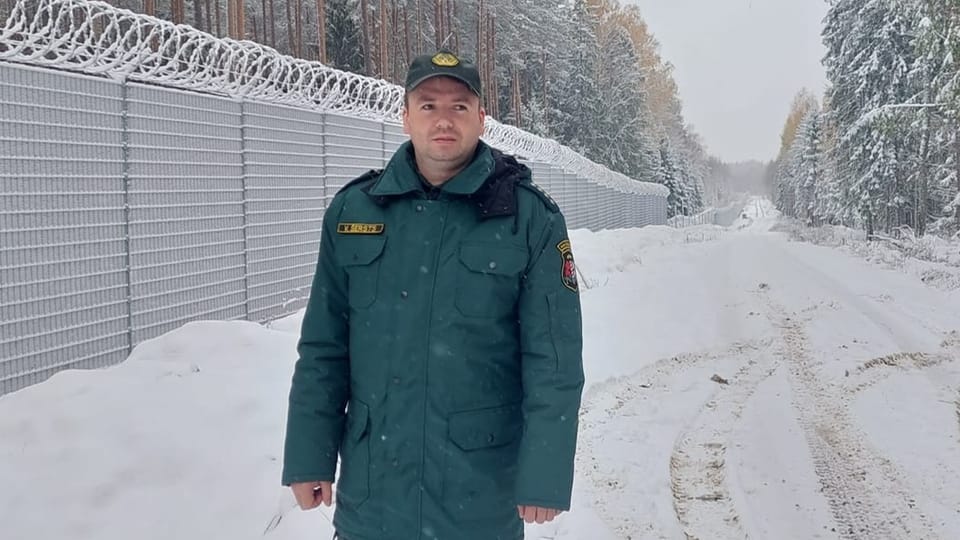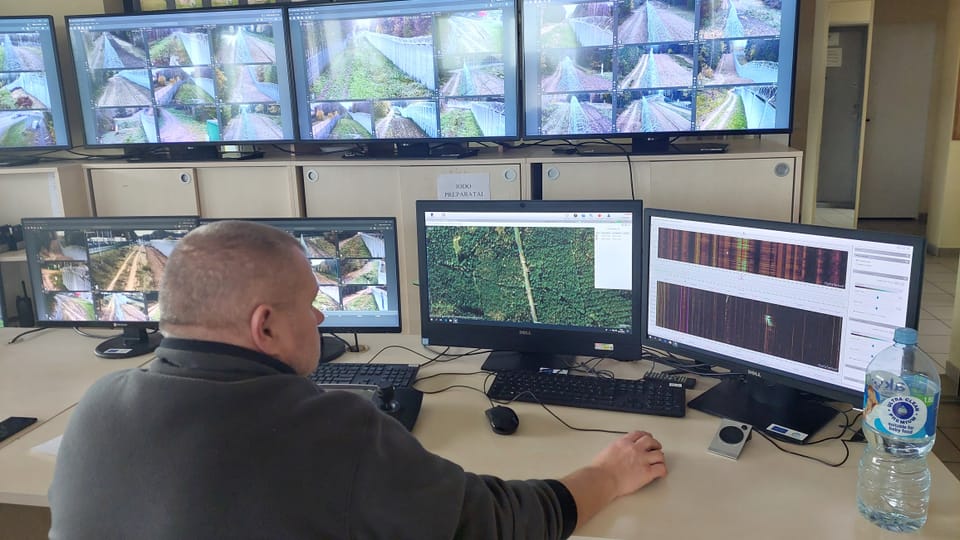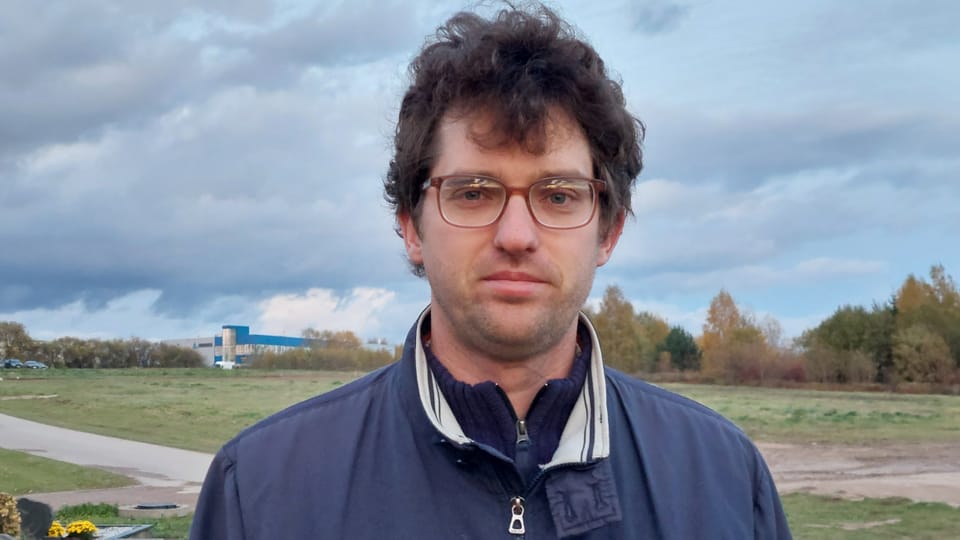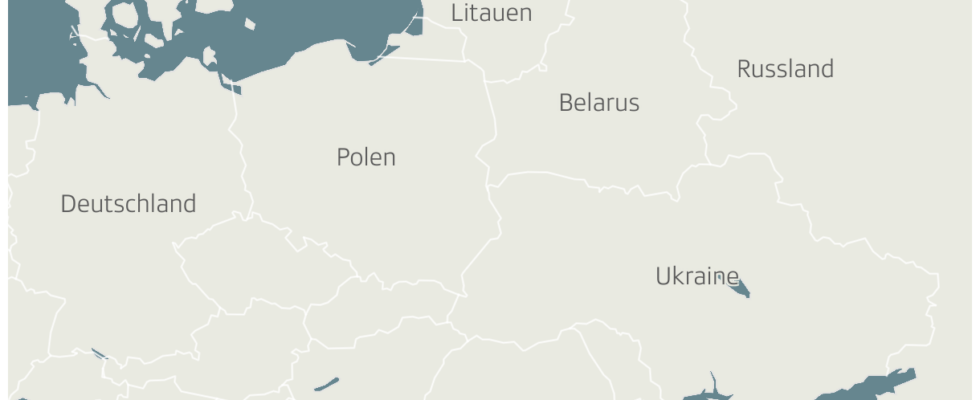Deserted forest, snow-covered fields. The border area near the village of Silene, in the very southeast of Latvia, is a forgotten corner of the country. The nearby border crossing with Belarus is closed and all available border guard forces are needed to monitor the green border. Even the military is helping. In contrast to its neighbors Lithuania and Poland, Latvia has not yet completely finished building the border fence with Belarus.
Latvia is, so to speak, the region’s weak point: the regime in Belarus is still specifically sending refugees to the EU borders, currently preferably to the border with Latvia.
Border guard Vladimir Schersts says they counted up to 250 illegal border crossings on certain days. And he also says that the border fence should be finished by the end of the year, along with the associated infrastructure: new paths along the fence, surveillance cameras and sensors.
The fence is not a stone wall, you can overcome it. But it gives us more time to react.
But even the finished fence is damaged or cut open using special tools. And probably with the help of the Belarusian border guards. Schersts says: “The fence is not a stone wall, you can overcome it. But it gives us more time to react.”
Respond in accordance with the law that has been in force in Latvia since this summer. The aim is to prevent irregular border crossings or – as human rights organizations put it – to push people back.
The destination is Germany
What does border guard Schersts do when he encounters exhausted, half-frozen refugees? Then you investigate whether these people needed medical help. If so, call the ambulance. Depending on the results of the investigation, they are allowed to stay for humanitarian reasons or illegal border crossings are prevented.
In plain language, this means: injured and particularly vulnerable people can apply for asylum, the others will be brought back across the border.

Legend:
Vladimir Schersts guards the long border fence with Belarus on the Latvian side.
SRF / Judith Huber
But the experience of the border guards is that most of them do not want to stay in Latvia. Your destination is Germany. Some of the refugees would even think that this is the border to Germany, says Schersts’ colleague. They were misinformed by the Belarusians and were completely surprised.
But there are many who make it across the border and wait in the forest until they are picked up by helpers from the smugglers who drive them west to Germany. A huge problem for the Latvian state, which is countering the smugglers with increased patrols and now high penalties for those who help them.
Monitors record fates
The neighboring country Lithuania has an even longer border with Belarus than Latvia. The border fence has been finished here since September last year. It is 3.7 meters high and there is additional barbed wire at the top. The legislation is similar to that in Latvia.
The effort involved in guarding the green border is immense. This is shown by a visit to a control room of the Lithuanian border guard: The monitors show the recordings from the surveillance cameras of the section of the border for which the station is responsible. Several people work here day and night. The deflections of the sensors are displayed on a screen; These are laid in the forest floor and record all movements in the border area.

Legend:
Permanently monitored: The cameras not only provide images of the fence sections, but also become witnesses to human fates.
SRF / Judith Huber
The border guard on duty, Viktor, shows a saved video recording. It’s night, the infrared camera has recorded everything. You can see a man crawling to the fence, quickly cutting a hole in the dense metal mesh with metal scissors and getting to the other side. Two other people follow him. But the action is being observed in the control room. A patrol quickly arrived on the scene and arrested the three people. They are young men from Iran who want to go to Germany. They will be returned to Belarus.
People as pawns between two states
However, a Somali and a Syrian were allowed to stay in Lithuania and are now in a hospital in the town of Visaginas near the border. The price they paid for this is high: their physical integrity.
The NGO Sienos Grupe, which works for refugees, found out about their presence in the hospital. Both men suffered frostbite, the Somali man on his toes and the Syrian man also on his legs. He is in severe pain. The two say that they experienced several pushbacks together with other refugees in the Belarus-Latvia and Belarus-Lithuania border areas and wandered around in the forest for a long time. Because of their injuries, the two were ultimately able to stay in Lithuania; the rest of the group was forced back to Belarus.
The members of the Sienos Group asked the men whether they had received a lawyer and whether they were able to apply for asylum. This is the case. They offer to contact their relatives and organize extra clothes and a second cell phone because they only have one to share.
Undiscovered dead
Mantautas Sulkus is co-founder of Sienos Grupe. He says some refugees are not well equipped for the conditions in the border area. But even with appropriate clothing, after several days in the forest and swamps, without enough food, in the cold and wet, it becomes life-threatening. There have already been deaths – no one knows how many there are, some bodies are probably still undiscovered.
And why hardly anyone takes the legal route and asks for asylum at the official border crossing? That is unrealistic, says Sulkus. The refugees often did not have the necessary documents. In addition, they are at the mercy of Belarusian smugglers and border guards who push them to the green border.

Legend:
Mantautas Sulkus, co-founder of Sienos Grupe.
SRF / Judith Huber
Sulkus and his fellow campaigners are trying to show Lithuanian society what fate lies behind “illegal border crossings”. Because the migration problem is usually understood exclusively as a threat, as a hybrid war by Belarus against its neighbors.
The fence only leads to more suffering.
And how does he assess the construction of the border fence? This has actually reduced the number of crossings over the green border. Yes, says Mantautas Sulkus, but he can’t stop the people completely: “The fence only leads to more suffering.”
The Somali is now housed in an asylum accommodation. He still has pain in his toes, but is otherwise in good shape. The Syrian, however, had to have both legs amputated.
